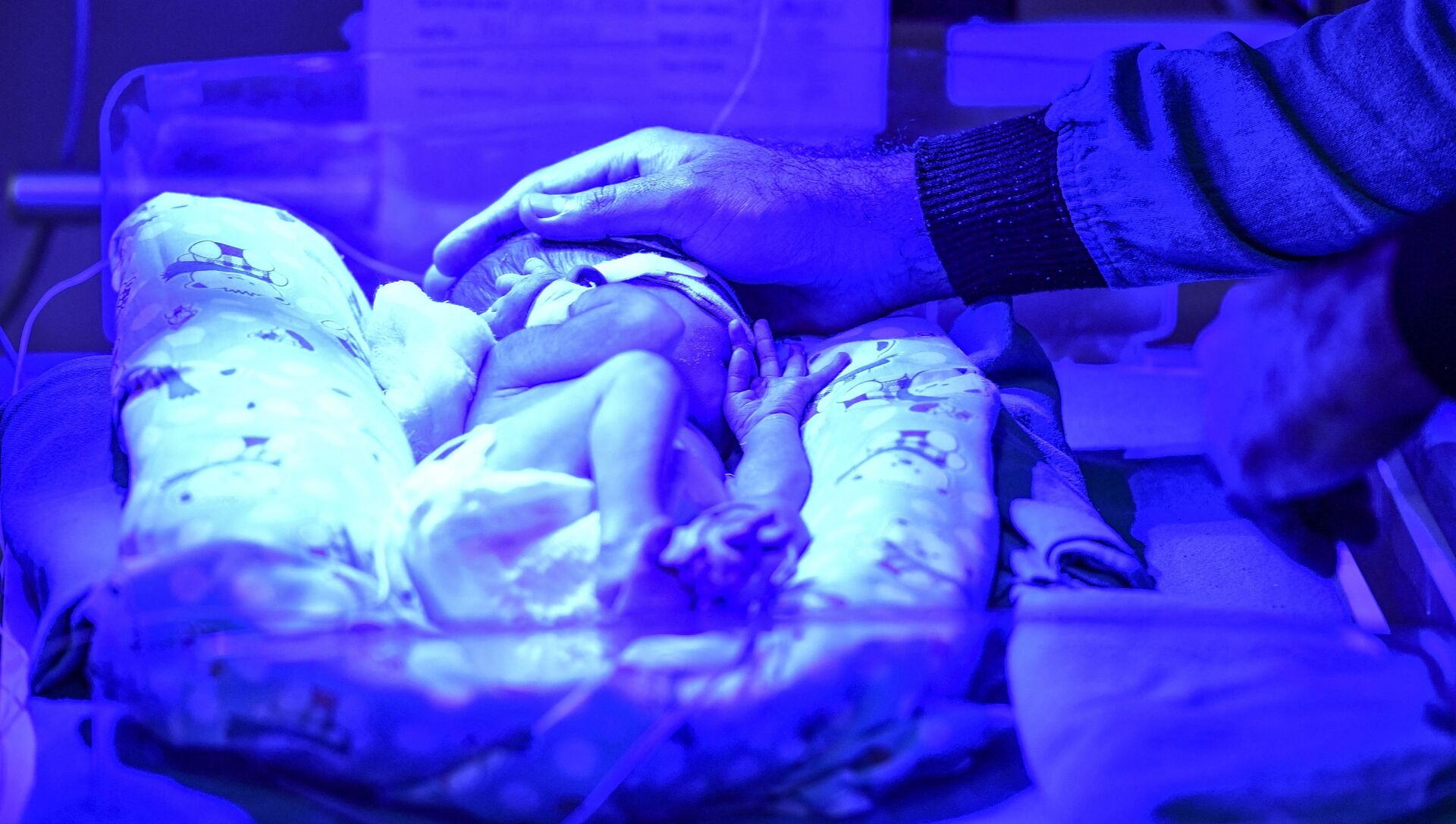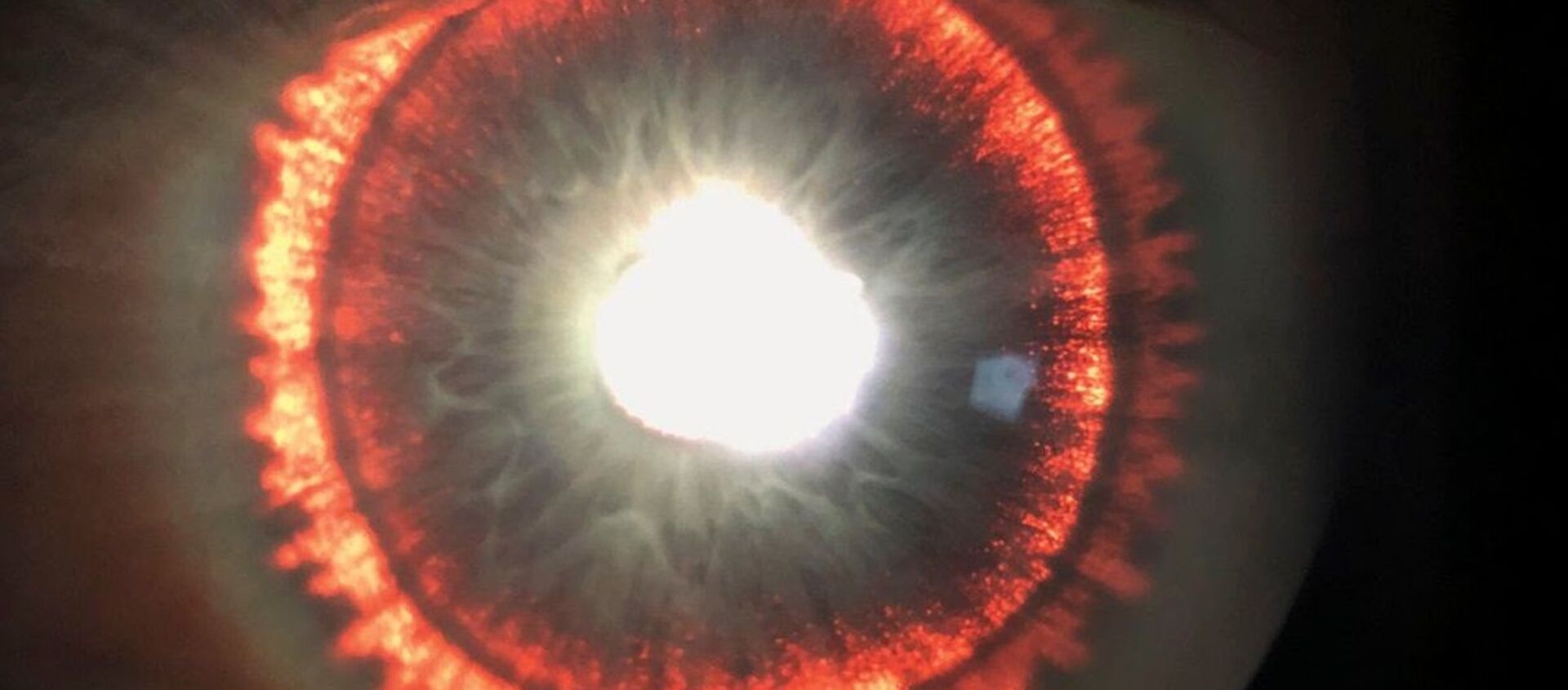Patients With Rare Diseases Struggle to Find Cure and Proper Treatment in India
10:41 GMT 20.08.2021 (Updated: 10:38 GMT 19.07.2022)

© AFP 2023 / PRAKASH SINGH
Subscribe
These rare diseases only affect a small proportion of India's population, but their impact is often catastrophic, not only for patients but also the family, in terms of emotional as well as financial burden. The early diagnosis of rare diseases is a challenge, especially if appropriate screening or diagnostics are not accessible.
Teera Kamat was born last year and seemed to be a healthy baby. Her parents, Mihir and Priyanka Kamat, were elated after her birth, excited to begin a new journey of their life along with their daughter. However, a week later, Teera started showing symptoms of a disease they had never heard of. After 10 weeks, Teera was diagnosed with Spinal Muscular Atrophy Type 1, an extremely rare genetic disorder.
Spinal muscular atrophy (SMA) is a group of hereditary diseases that slowly destroy motor neurons — nerve cells in the brain stem and spinal cord that control essential skeletal muscle activity such as speaking, walking, breathing, and swallowing, leading to muscle weakness and atrophy. Though many kinds of research have been conducted, SMA is currently incurable. Generally, the disease doesn't even let children live beyond two years of age without medical intervention.
The Kamat family didn't lose hope. Five months later, Teera received Zolgensma, a novel gene replacement therapy medication from the United States, for which her parents raised over $2,150,000 through crowd-funding. However, there are many other patients with such diseases that are left uncertain and hopeless.
View this post on Instagram
Due to it population of over 1.3 billion and human biological diversity, India offers researchers exceptional opportunities in learning more about such illnesses.
"Biological diversity actually helps protect genetic conditions. According to a common theory in evolutionary biology, it is there to enable the species to respond more effectively to changes in the environment, such as the occurrence of disease which could be infectious and or environmental. It does try to maintain a balance to protect and preserve better the advantageous features by process of natural selection," Dr. Jaya Vyas, a consultant at the Genetics Department of Metropolis Healthcare Ltd. told Sputnik.
Last month, the Indian government announced that it has finalised a National Policy for Rare Diseases and its objective will be to make them less prevalent. According to a report by Observer Research Foundation, more than 350 million people suffer from rare ailments globally and nearly one-fifth of them are from India.
"About 450 rare diseases have been recorded in India, with new rare diseases being reported in the medical literature regularly. The sheer complexity and nature of these diseases and resulting lack of sufficient epidemiological data, their varying prevalence, and defining thresholds with changing populations have hampered the generation of precise figures on the burden of rare diseases and morbidity and mortality associated with them. The phrase 'rare diseases' has recently gained considerable attention among the public and scientific community in India," Dr. Gunjan Bansal, a consultant of the Pathologist Dept. of Molecular Pathology and Molecular Biology at Metropolis Healthcare Ltd. told Sputnik.
Dr. Bansal also said that different studies have highlighted a high genetic burden in India and this can be attributed to multiple factors. India's othewise remarkable genetic diversity is driving the high genetic disease prevalence. Conversely, the rarity of disease heightens the deficit in scientific data, and healthcare practices have led to a profound lack of awareness among the general public in a country which has suffered from lower rates of literacy and basic education, she added.
Expensive Treatment
Although these diseases are rare and it seems like they affect a marginal population of the country, there are over 70 million Indians who are struggling with hopelessness to find a cure. Unfortunately, at least 30 percent of all children with these diseases do not live to see their fifth birthday.
"Most of the rare cases diagnosed are done at tertiary care centres, most of which are located at urban centers and the costs of ruling out other diseases and coming to a final diagnosis is a very expensive affair, limiting the required resources to be available to a select a financially well-off population, and even in this group a lot of time goes by and suffering takes place before the final diagnosis is made, having a tremendous impact on the physical and mental health of the patient and their families," Dr. Vighnesh Naidu, a Consultant Physician at Yashoda Hospitals Hyderabad told Sputnik.
According to health experts, as the number of people suffering from individual rare diseases is small, they do not create a market for drug manufacturers to develop drugs for them. This is why rare diseases are often called "orphan diseases" and drugs used to treat them are called “orphan drugs”. This is also the reason the prices are exorbitant, apparently to recoup the cost of research and development.
"In the US and Canada, instruments like the Orphan Drug Act (ODA), provide incentives to drug manufacturers and have been a guiding light to encourage them to manufacture drugs for rare diseases. As more and more data is generated, strengthening research into developing low-cost therapeutics will pave the way for available and affordable drugs," Dr. Bansal explained.
Generally, it takes up to eight years to accurately diagnose these conditions, however, in India, the period is stretched further due to the unavailability of testing, limited access to doctors and experts, and a lack of understanding of the impact of such diseases on the lives of the patients. According to a Lancet study, about 95 percent of rare diseases have no approved treatment.
Another thing that is concerning is that there is no standard definition in India of what constitutes this category of disease, though many countries have one. According to the World Health Organization (WHO), a rare disease is defined as one with a frequency of less than 6.5–10 per 10,000 persons. In India, National Policy for Rare Diseases suggested that the data on how many people suffer from different diseases that are considered rare globally is lacking in the country.
In India, disorders like Primary immunodeficiency disorders, Lysosomal storage disorders (Gaucher’s disease, Mucopolysaccharidoses, Pompe disease, Fabry disease, etc.) small molecule inborn errors of metabolism (Maple Syrup urine disease, organic acidemias, etc.), Cystic Fibrosis, osteogenesis imperfecta, certain forms of muscular dystrophies and spinal muscular atrophy, among others, come under the category of rare diseases.
Consanguineous and Endogamous Marriages: A Cause to Worry
Consanguineous and endogamous marriages (inbreeding) are extremely common in India and these unions have led to diverse, population-specific traits and genetic variations among the populations and disease-causing mutations. According to genetic experts, there is a greater risk of carrying these disease-causing mutations when the parents are closely related.
"Consanguineous marriage or marriage within families actually increase the risk of congenital malformations and autosomal recessive diseases, with some resultant increased postnatal mortality in the offspring of first-cousin couples. Parental consanguinity is associated with an increased risk of autosomal recessive disorders and congenital anomalies in the offspring. Besides, congenital malformations detrimentally affect the indicators of fetal survival and lead to the birth of progenies who are disadvantaged in terms of health parameters," Dr. Vyas said.
Dr. Vyas explained that parental consanguinity is a predisposing factor for many multifactorial complications, including obesity, cardiovascular disorders, diabetes, and some malignancies, which may influence reproductive outcomes.
"However, some reports refute the impact of congenital malformations on complex and multifactorial health issues. The estimation of the overall adverse effects of congenital malformations is highly variable and perplexing to delineate from the epidemiological context," he added.
Doctors and health experts suggest that there is an urgent need to raise awareness about these diseases among medical communities and healthcare workers so that they can identify and detect or suspect these conditions in the first encounter with the patient and inform their families as soon as possible.






